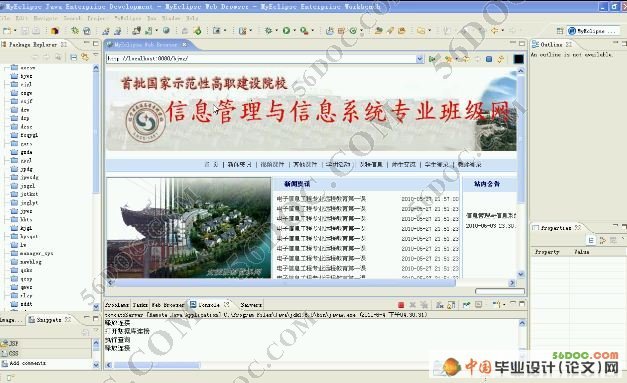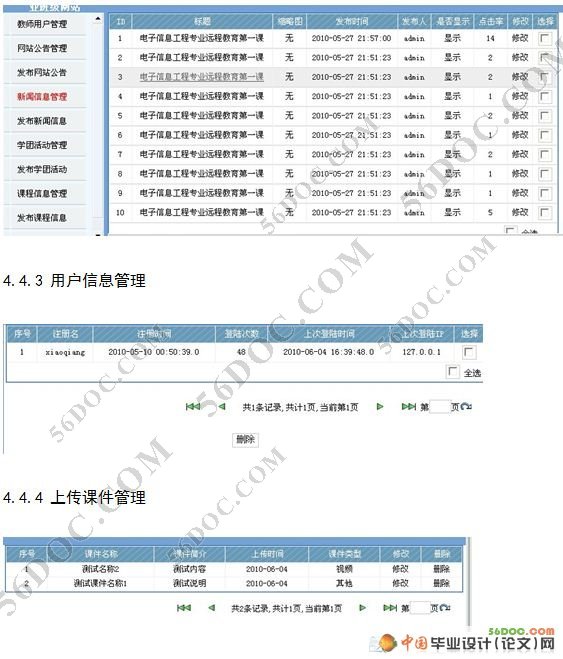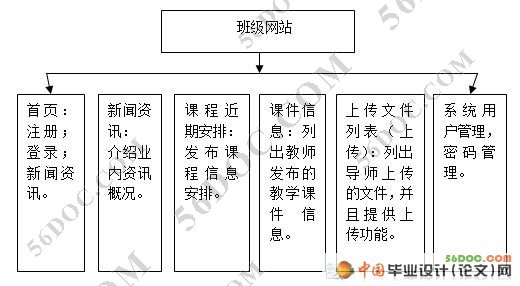JSP班级网站的设计与实现(SQL2000)含录像
无需注册登录,支付后按照提示操作即可获取该资料.
摘要:本班级网站是使用JSP编程语言和SQL Server2000数据库共同来完成的,采用面向对象方法,对班级网站进行设计与实现。分析设计了班级网站的静态模型和动态模型,完成了系统开发的分析、设计和实现的工作。本班级网站通过Web方式完成用户与系统的交互,系统的功能模块具体有用户管理模块、学生管理模块、课程信息管理模块。本系统的开发采用现有成熟技术为参照,共享源码为模板,结合本课程的实际需求进行分析和功能调整,探讨了利用JSP开发班级网站的过程。
关键词:班级网站,管理,系统
Abstract: The class website is using JSP and SQL Server2000 database programming language common to complete, object-oriented approach, on the class web site design and implementation. Analysis and design of the class static website and dynamic models, the completion of system development analysis, design and implementation work. The class Web site is accomplished by the user and system interaction, system specific modules have user management module, student management module, course information management module. The system has been developed using existing proven technology as a reference, sharing source code as a template, combined with the actual needs of the curriculum analysis and functional adjustments, of JSP development using the process class website.
Keywords: class website, management, system
本设计实现的主要功能包括:
1) 用户管理模块:实现对教师、学生及管理员等用户角色和权限的分配。
2) 班级学团活动信息管理:教师和学生能够浏览和查询学团信息,管理员实现学团信息的增加、修改、删除及查询功能。
3) 学生基本信息管理:班级学生通过注册成为网站成员后能进行个人信息的修改。管理员可以对学生个人信息进行删除及查询功能。
4) 课程信息管理:实现对课程表、教师及教室信息的查询,电子课件的上传和下载功能。
5) 师生交流模块:实现学生与学生之间以及学生与教师之间互动交流。




目 录 12000字
1、引言 4
2、系统分析 5
2.1 系统需求分析 5
2.2 本系统采用的关键技术 7
2.2.1 JSP技术 7
2.2.2 JAVABean技术 9
2.2.3 JDBC技术 10
2.2.4 用JDBC访问数据库 11
2.3 可行性分析 14
3、系统概要设计 14
4、系统详细设计 15
4.1 关于数据库 15
4.2 系统E-R图 17
4.3 处理流程设计 17
4.3.1 系统操作流程 17
4.3.2 数据增加流程 18
4.3.3 数据修改流程 19
4.4.4 数据删除流程 20
4.4 系统模块设计 21
4.4.1 管理员登陆 21
4.4.2新闻资讯管理 21
4.4.3 用户信息管理 22
4.4.4 上传课件管理 22
4.4.5 网站首页 22
5、系统调试与测试 23
5.1 程序调试 23
5.2 程序的测试 23
5.2.1 测试的重要性及目的 23
5.2.2 测试的步骤 25
5.2.3 测试的主要内容 25
6、结论 26
6.1 系统评价 26
6.2 安全性问题 27
致谢 28
参考文献 29
